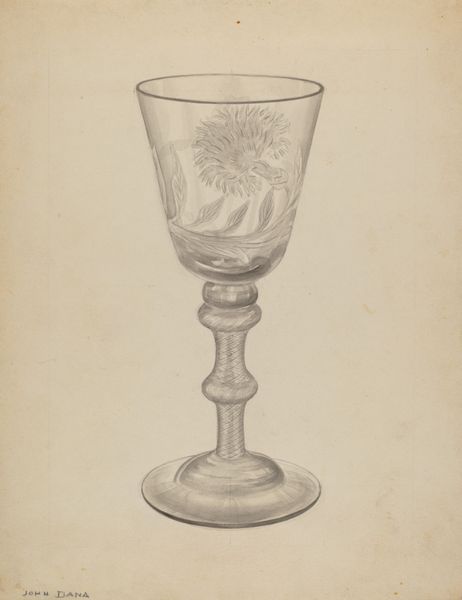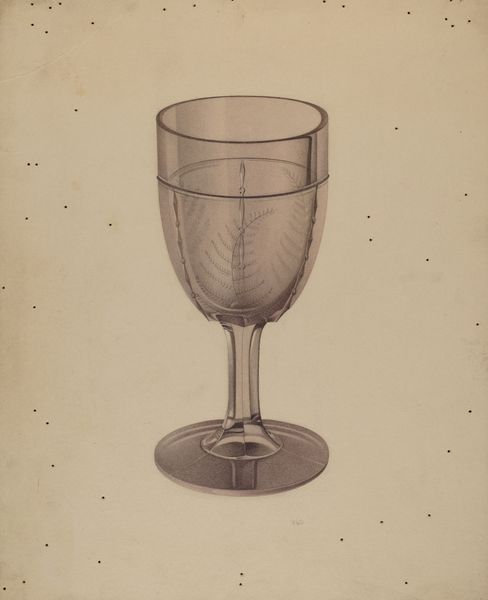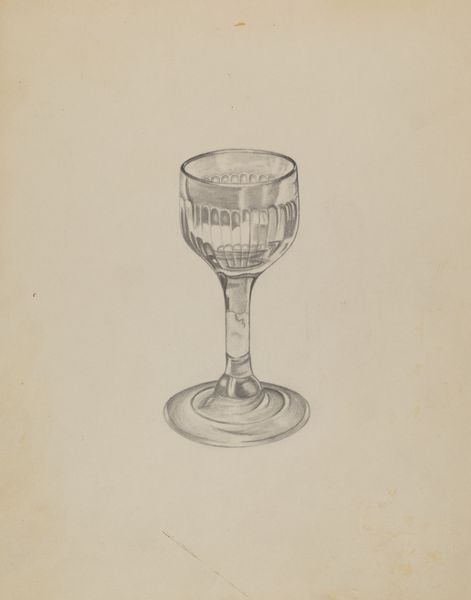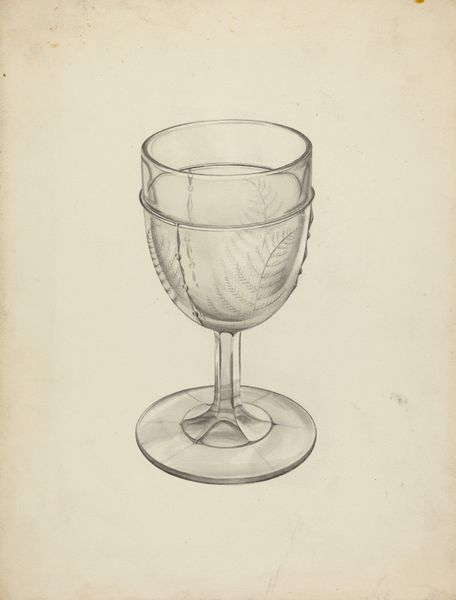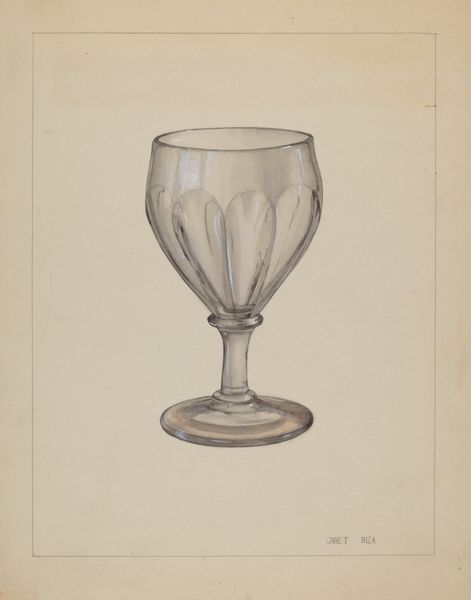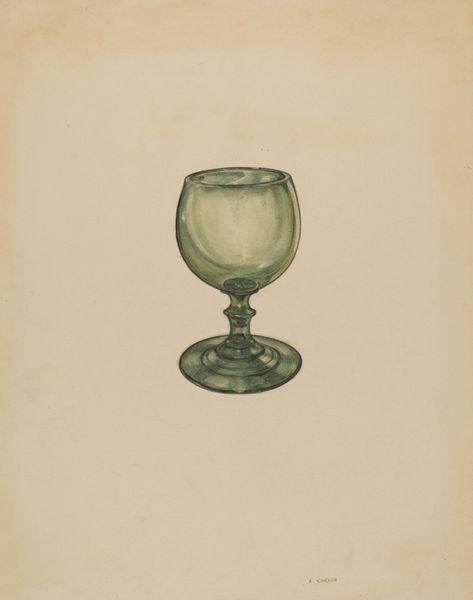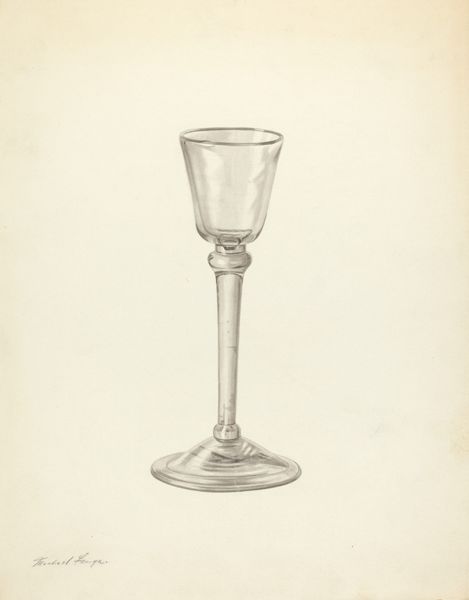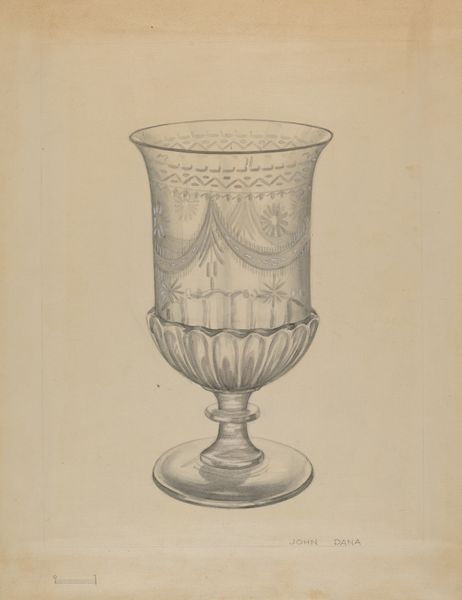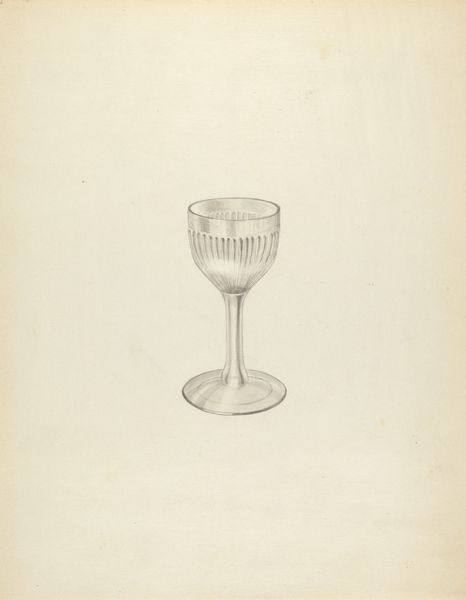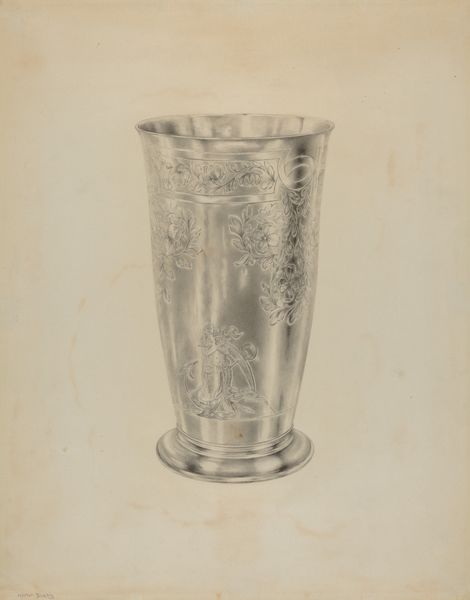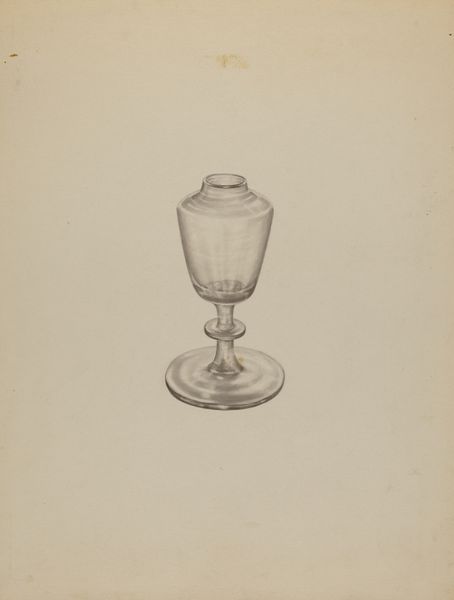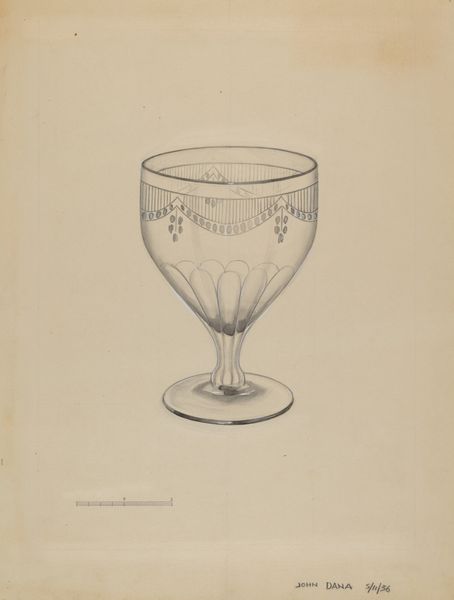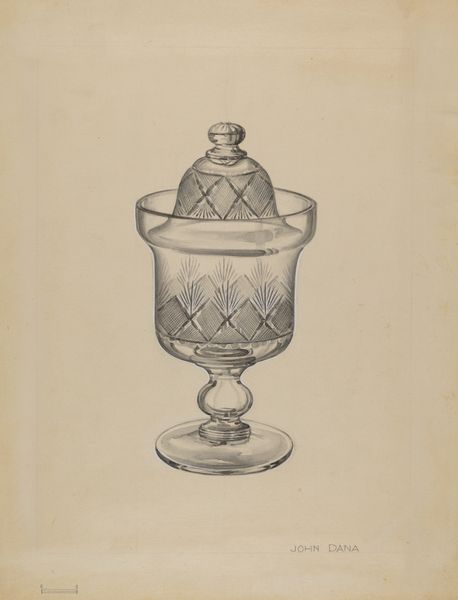
drawing, paper, pencil
#
drawing
#
paper
#
geometric
#
pencil
#
academic-art
Dimensions: overall: 30.3 x 22.8 cm (11 15/16 x 9 in.)
Copyright: National Gallery of Art: CC0 1.0
Editor: We're looking at John Dana's "Rummer," made around 1936, a drawing on paper with pencil. It has a stillness to it, almost like a photograph, yet it's clearly rendered by hand. How would you approach interpreting this piece? Curator: Immediately, the precise rendering commands attention. Consider the meticulous line work and the gradation of tone used to convey the illusion of volume and light reflecting off glass. It operates as an exercise in form, exploring the relationship between positive and negative space, line and shadow, through a geometric, rather academic, style. Editor: So, it's not necessarily about what the glass *is*, but more about how it's depicted? Curator: Precisely. The inherent qualities are of the greatest concern, no intended content nor social messages distract the eye from its structure. The decorations upon the glass are depicted not as adornment but as geometric forms that echo the overall structural concerns of the artwork. Notice the recurring circles and parallel lines. Editor: The repetition does give it a structured feel. The balance seems important too; is there an underlying symmetry at play? Curator: Undoubtedly, the formal symmetries add a sense of harmonious resolve, even permanence, through precise repetition that speaks to structure. But the fact that it's a drawing – ephemeral by nature – presents an interesting tension, would you not agree? Editor: That makes perfect sense! Thanks. I never thought of it in this analytical way, I appreciate your expert insight, thank you. Curator: Indeed. Formal analysis allows us a unique appreciation. Focusing on structure illuminates design principles.
Comments
No comments
Be the first to comment and join the conversation on the ultimate creative platform.
